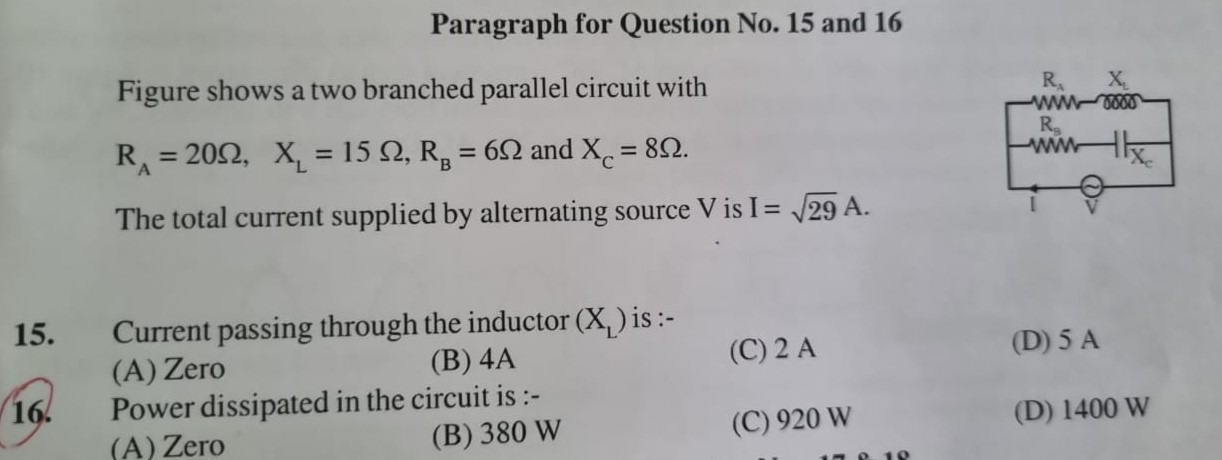Question
Question: Figure shows a two branched parallel circuit with $R_A = 20\Omega$, $X_L = 15 \Omega$, $R_B = 6\Ome...
Figure shows a two branched parallel circuit with
RA=20Ω, XL=15Ω, RB=6Ω and XC=8Ω.
The total current supplied by alternating source V is I=29 A.
- Current passing through the inductor (XL) is :-

A
Zero
B
4A
C
2 A
D
5 A
Answer
2 A
Explanation
Solution
The circuit consists of two parallel branches.
Branch 1: RA=20Ω and XL=15Ω. Impedance Z1=20+j15, and ∣Z1∣=202+152=25Ω.
Branch 2: RB=6Ω and XC=8Ω. Impedance Z2=6−j8, and ∣Z2∣=62+(−8)2=10Ω.
Total impedance ∣Ztotal∣=295029Ω.
Voltage across the parallel circuit V=I∣Ztotal∣=29×295029=50 V.
Current through the inductor is the current through branch 1: ∣I1∣=∣Z1∣V=2550=2 A.
